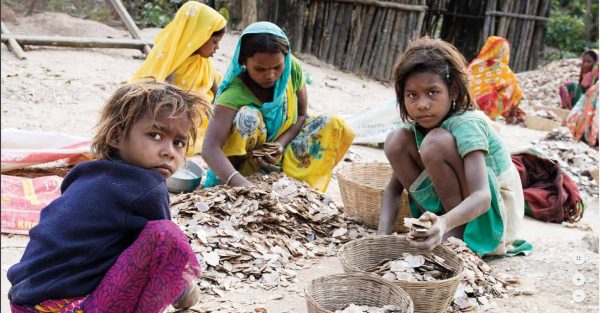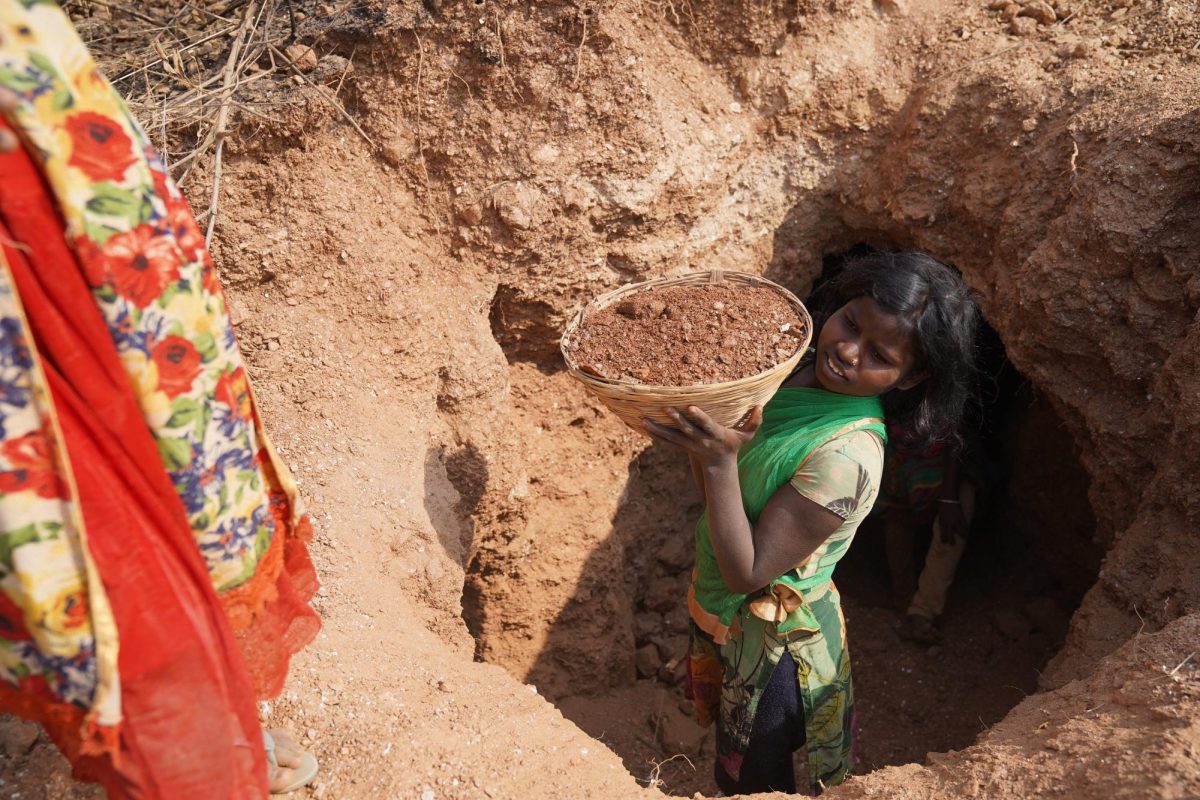Nine thousand miles away, children in remote villages in India and Madagascar have been risking their lives to mine the shimmer found in our makeup. Unfortunately, that has been the reality for over 22,000 kids as young as four who work in these dangerous mica mines due to exploitation and the illegal prevalence of child labor in Asia and Africa. In a recent interview with Refinery29, a young 11-year girl; Pooja, details her life as a mica miner on the outskirts of her town in India. Scurrying with children dressed in colorful dresses and scarves, their skin shimmering under the beating sunlight as their cheeks and arms are coated with mica. Spending long hours along the embankments of man-made tunnels, kids like Pooja, equipped with hammers and baskets, labor to extract this flaky mineral from small pits of rock and dirt as they cautiously pass full baskets of mica to the top. As they dump their baskets into sieves, they begin sifting for mica, a shiny mineral composite that takes hundreds of years to form underground. If lucky, Pooja and her friend’s labor will earn her around 20 to 30 rupees, which is equivalent to roughly 29 to 36 cents in the US, according to Refinery29.
With such minimal pay at such a high risk, children like Pooja are not just sacrificing their safety but their chance at education. Even while the risks outweigh the profit and the increased possibility of these unstable mines collapsing, kids being exploited for child labor know that it is the only way they can help provide food for their families. Unaware of what happens to the mica after selling it to local brokers in town, such raw material mica is often exported to manufacturers in China to be milled into an iridescent pigment commonly sold to huge international makeup companies such as Rare Beauty, Eśtee Lauder, MAC, and, Bobbi Brown, for their shiny highlighters, eyeshadows, and lip glosses. While these vast corporations reap the financial benefits of sourcing their mica from isolated and obscure villages, employers and exporters are able to take advantage of exploiting these groups who extract this mineral.
Linked to child labor, mica has been the source of unethical and unsustainable practices in which the cosmetics industry consistently remains embroiled as children are deemed more suitable for entering into these narrow tunnels for extraction. Known as ‘mica,’ ‘potassium aluminum silicate,’ and ‘CI 77019’ on ingredient labels of products, 60% of high-quality mica is sourced from India, in

which child labor exploitation is normalized. For many years, India has been recognized as the largest producer and exporter of mica globally, with several mines in Bihar and Jharkhand states. Known as some of India’s most impoverished regions, many families who are on the edge of starvation have no choice but to take part in child labor. With around 70% of mica being produced in India coming from illegal mines, they remain unregulated by the government as one of the few industries in their region, forcing families to work under unethical conditions such as crumbling mines and corrupt systems such as the “mica mafia.” With such constant exposure to fine specks of dust, high rates of respiratory illnesses have been reported as a common side effect in mining as well as the infections and cuts that come with digging in the soil with their bare hands for hours. As this concept of family mining is typical in many regions of India, children are predominantly used for their small stature and agile hands, making them valuable when sorting small pieces of mica and entering the mines.
However, this is not new among developing economies as countries “cursed” with lucrative natural resources in the eyes of morality deem it to be more hurtful to a country as exploitation standardized by the developed world. Despite the fact that mica mining has proven to pose serious threats to the safety and health of children, families still heavily depend on these earnings for income as communities residing by these mines have been stuck in an endless cycle of poverty, constant exploitations, and abuse making every day a battle to survive. So, how can we help? While the movement toward ending the cycle of abuse in mica mining has proven to be difficult and multi-faceted, beauty companies have been testing the use of synthetic mica. Although this may seem like a sustainable alternative with no child labor required, in reality, there is still no full transparency and disclosure that synthetic mica will be completely child-labor-free. Even as exploitative and dangerous mining mica is, thousands of families in impoverished states can survive, given the opportunities families receive from working at these mines. In these regions, although meek, whole communities dedicate their living to extracting mica for profit, meaning abandoning mica products would hurt families who solely rely on these mines for income. This could increase the level of poverty in regions such as Bihar and Jharkhand if natural sources of mica were ousted by a synthetic version, making this an ethical quandary when it comes to finding a resolution to an incredibly hard issue.
However, what is definite is that no child should be exploited for their labor; given these dangerous conditions, children and parents should be offered help by the government to reduce their reliance on illegal mica mining as their source of income and stabilize education systems to improve living conditions near the mines. Simply instead of boycotting mica products, taking initiatives that support a clean supply chain and have government regulation over mining practices can help ensure Indian communities safer working conditions. While the shimmer in our products remains bright, mica mining may be the beauty industry’s darkest secret.
Cruelty-Free and Ethically- sources Mica Makeup Brands:
(provided by Ethical Elephant and members of the Responsible Mica Initiative)
- Buxom (Shiseido)
- Charlotte Tilsbury (PUIG)
- CocoKind
- Kosas
- Milk Makeup
- SuperGoop!
- The Body Shop
- Tower 28
































